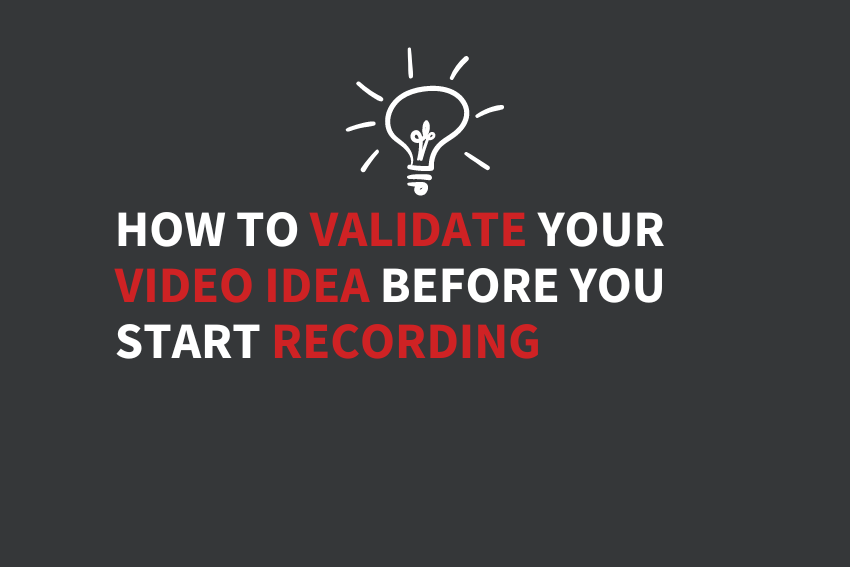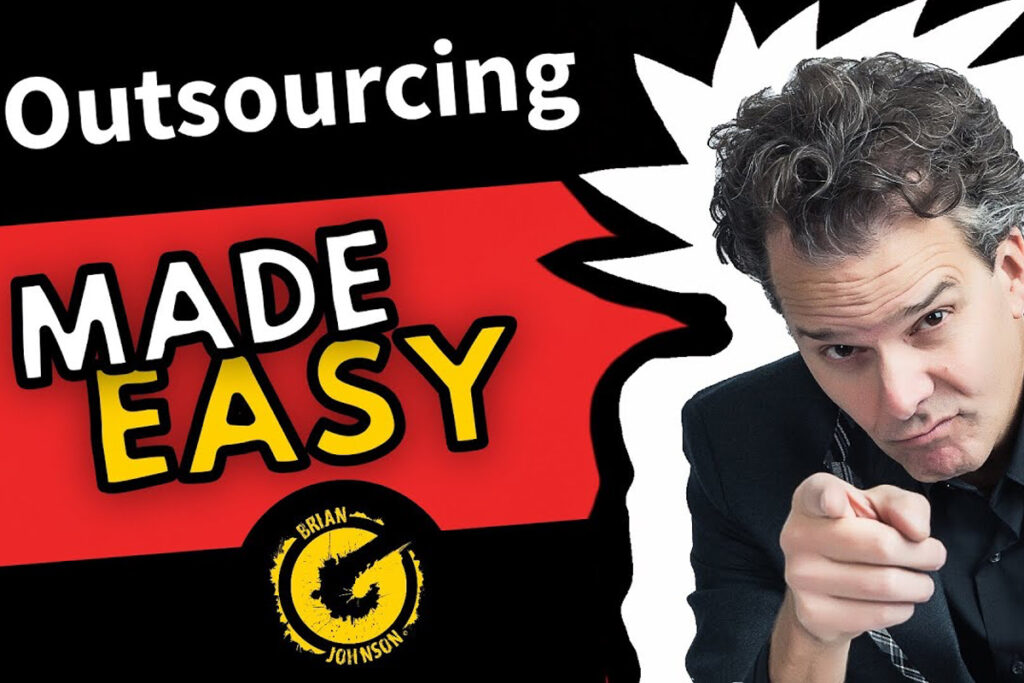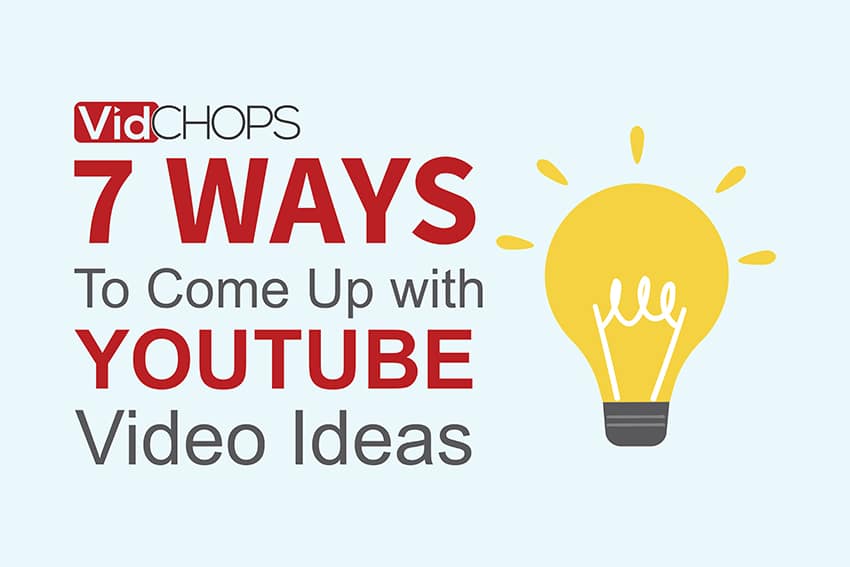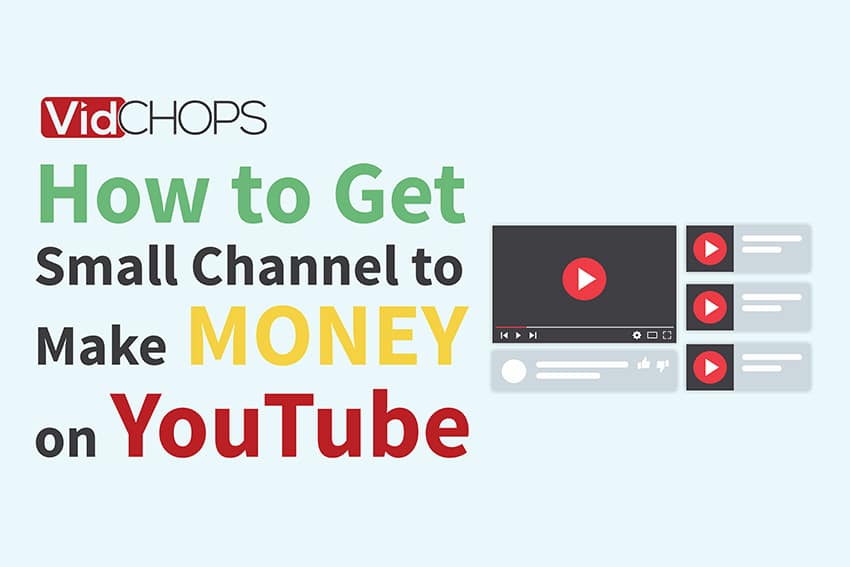How Top Video Creators Turn Simple Views Into 7-Figure Businesses
We break it all down on The Video Creatr Show, click the link below.

Coming up with ideas for videos is a lot of fun. However, sometimes the subjects you think will be a big hit don’t make an impact. Knowing which videos will be popular (and which won’t) can feel like a bit of a guessing game. This is why validating your ideas before you start recording is crucial.
As any content creator will tell you, predicting which videos will be popular is challenging. Writing and recording a script takes a lot of time. So it’s essential to find a way to validate your ideas before you commit your resources to any particular idea.
There are a lot of elements that go into making a video a hit. Some of them we can control, while others are hard to define.
So while it’s good to be passionate and excited about your ideas, it’s also wise to step back and test them out.
Why it’s vital to validate your ideas
There are lots of reasons why you should test your ideas. Here are a few of the best reasons why:
1) It improves the quality of your channel
2) It increases your views
3) It conserves your resources for the best ideas
4) It helps you figure out which ideas are good but need further development
Testing your ideas means that you know there is an interested audience for your video. It also gives you more time to think about your concepts and fine-tune your approach.
Validating your ideas is an excellent way to learn and grow. During the process, you might realize that one of your ideas isn’t going to work. However, it could also become clear:
a) Why it doesn’t have an audience yet
b) What you can do to change that
Here are five ways to validate your video ideas to ensure your videos resonate with your audience.
#1. Is the subject current?
Some video ideas are evergreen. However, others are much more dependent on when they are released. Timing is everything, as they say.
For example, if you have a cooking channel, releasing “5 Great Summer Salad Ideas” in December would be a strange move. While that’s an extreme example, it shows how vital the proper schedule is.
So, that’s the first question you need to ask yourself: “Is now the best time to release this video — or should I wait?”
One of the best ways to validate whether an idea is good for now or later is to use Google Trends. You can plug in any term or phrase and see how many people are searching for it over time.
Look at the “summer salads” graph to see what we mean.

Of course, it’s not just seasonal trends that should get your attention. You can also keep track of sporting and cultural events, news stories, and crazes.
Overall, using a content calendar and planning your content for opportune times is a great idea.
PRO TIP: Use Google Trends to get inspiration for future ideas. Depending on your turnaround time, you can react to breaking news. Or, if it takes you a little time to write and record, consider looking out for more gradually breaking topics or concepts that are growing in interest.
#2. Are you putting a new spin on an idea
The video content market is very competitive and frequently saturated. While genuinely new ideas are relatively rare, if you want your video to stand out from the crowd, you need to find a way to bring a fresh approach or perspective to the subject.
You can put a new spin on an idea or subject in many different ways. For example, you can:
- Delve further into research that your competitors
- Offer better and more considered analysis than your competitors’ videos
- Bring a fresh perspective (e.g., a woman’s view on X)
- Treat a serious/challenging subject in a more accessible way
- Bump up the technical qualities of the video and present it in a slick, professional, and intriguing way
Finding a way to inject your brand personality into your work is essential. If you have a good-sized audience, they will want to see your take on specific topics or issues. However, if you are just starting, finding ways to stand out is crucial.
Video is just like any other content. Your audience wants value and will stick around and share your videos if you give them what they want. So give them something they can’t quite get anywhere else, be it jokes and irreverence, serious research, or fantastic production values.
#3. Do you know what your audience wants?
You could sit around all day scratching your chin and wondering what it is that your audience wants. Or, you could just ask them.
Any content creator knows the value of an engaged audience. More likes, comments, and shares lead to a boost from the YouTube algorithm. However, they can also lead to better content.
Part of building and engaging an audience is understanding what type of content they want. You can find this out in several ways.
For starters, you should always read and reply to your comments. This way, you’ll have a constant source of feedback about what is working and what needs more work. Additionally, your audience might suggest ideas for future videos.
Secondly, you can ask your audience what they want to see. You can set up a poll or simply ask for comments about what interests them.
In both scenarios, your audience can give you specific ideas or broad avenues to explore. For example, if your channel reviews movies, your audience might ask you to review TV shows too. Alternatively, they could give you particular films they want to see reviewed.
So, consider polls or comment sections to help guide your content. Similarly, if you have a few different ideas, put them up for a vote and see which one wins. At least you know your audience will like it before you get out of your camera.
#4. Pitch to family and friends
Your family and friends won’t always represent your audience, but they can be great to pitch to. Pull a few ideas and pitch them to people you know and see how they react.
Some of the ideas will land, others won’t. But that’s ok. If you occupy a very specialist and narrow niche, getting outsiders interested in your concepts can be challenging. But if you want to grow your channel, making your content more relatable is something you’ll need to consider.
#5. Make a proof of concept video
Before you start recording in earnest, one great way to test an idea is to make a super short proof of concept. YouTube has been pushing content creators to make shorts lately, and they’re already an excellent idea for Instagram and TikTok.
A proof of concept video is a short, punchy early cut of a video you plan to record in the future. It’s a really cool way to get your idea out in front of users to gauge their interest. The best thing is that they don’t need a huge amount of prep.
Once you have this short video, you can distribute it across your usual channels. Then, you look at the feedback. If you have a lot of likes and shares, it’s a good sign that your content is worth pursuing. However, you should also check the comments carefully.
Often, the comments section will be great for getting feedback. Some of your audience will tell you what they liked and even recommend areas within the topic they’d like you to cover. These ideas can be a treasure trove of inspirational ideas.
So, don’t be afraid to cut something small that touches on your video’s concept. It can really pay off.
Wrap up
Coming up with great ideas is hard, and writing and recording take a lot of work. But that’s the life of a content creator. If you want to make things a little easier on yourself, you can hire a video editor to give your videos a slick, professional look that helps them stand out from the crowd.
Vidchops is a subscription video-editing service. For a small monthly fee, you can have an unlimited amount of videos edited per month.
Video editing is a very particular skill. It takes a lot of experience and practice to be able to cut together videos so that they really pop. If you’re a content creator, you already have enough work coming up with ideas and recording.
So why not free up your time to focus on what you do best and leave the editing to us? So book a call today, and we can show you how we can bring your production to the next level.





